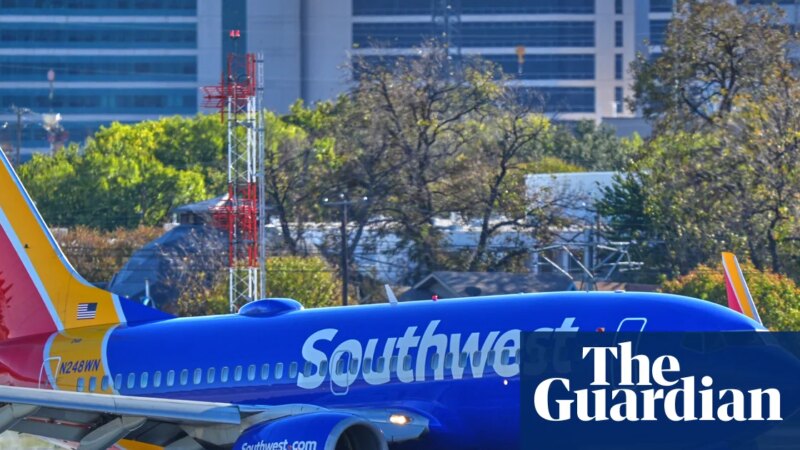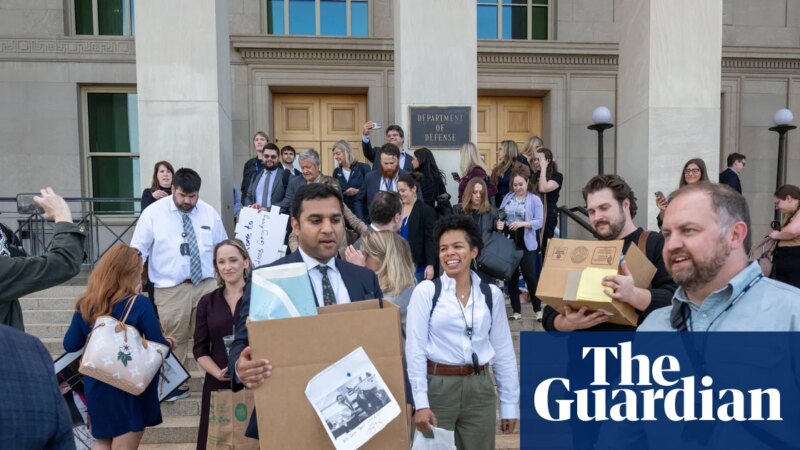Epstein survivor condemns Trump for calling file release fight a ‘hoax’ | Donald Trump
A survivor of Jeffrey Epstein’s abuse has condemned Donald Trump for dismissing the victims’ fight for transparency as a “hoax”.
Shortly after signing a bill to release the Epstein files, the US president posted a lengthy social media rant accusing Democrats of weaponising the scandal against him.
Danielle Bensky, 39, who was abused by Epstein as a teenager, said: “[Trump] made something very political out of something that could have been really a beautiful moment for our history and for women and for survivors everywhere.
“He is sort of missing the point entirely because this really should have been a day to celebrate all the achievements of all the survivors that led the charge in this.”
In Trump’s rambling message on Truth Social on Wednesday night, he failed to mention Epstein’s victims and instead used the moment to attack his political opponents, saying: “This latest Hoax will backfire on the Democrats just as all of the rest have!”
Bensky said Trump’s comments had undermined the tireless campaigning of the women abused by Epstein, such as Maria Farmer, Chauntae Davies and Virginia Giuffre, who killed herself in April.
“He’s used the word ‘hoax’ more times than we can count. It’s incredibly disrespectful. At every turn, no matter how many of us have come forward,” said Bensky.
She was among the group of Epstein survivors who held up photos of their younger selves at the US Capitol on Tuesday as they campaigned for the release of the Epstein files. The group was elated when the bill moved through the House and then the Senate on Wednesday, before it was sent to Trump.
“We’ve put so much time and effort into talking to congressional leaders, we’ve been talking to senators, we’ve done everything we possibly can and it feels a lot like America is on our side and has really heard us. What a beautiful moment for American democracy and instead [Trump] chooses to just make it divisive … It’s a double-edged sword,” Bensky said.
She was a 17-year-old ballerina when she was recruited in 2004 to give Epstein massages at his New York townhouse. At the time, she was under the impression that Epstein had a medical background and would help her mother, who had a brain tumour.
“I brought my mom’s scans to him and that was the day that basically everything changed. He said to me: ‘What are you going to do for me?’ He leveraged the scans and he threatened me: ‘The best anaesthesiologist won’t be on call for your mom if you don’t either procure more girls for me or start doing more around here,’” she recalled.
It was after that, when Bensky had turned 18, that Epstein’s abuse escalated to rape, she said.
“Coming out of that was really challenging and I disassociated a lot. I stopped looking at myself in leotard and tights and I stopped dancing for a while. I think that that completely changed the trajectory of my life,” she said.
after newsletter promotion
“I found my way back to choreography and that’s what I do now. I teach dance and the young girls and boys that I teach really have fuelled this fight for me because I just want to change it for them and make sure they never have to go through another thing like this.”
Bensky now hopes that facilitators of the late financier’s abuse can be held to account with the publication of the remaining files, which the justice department has 30 days to release.
“I hope that they do the right thing and release them in full. But at this point, we are very fearful of evidence going missing and major redactions,” Bensky said. “We just want people to be held to account. That’s it. The same way that the UK is doing.”
Bensky pointed to the former prince Andrew Mountbatten-Windsor being stripped of his royal titles over his relationship with Epstein as an example.
“I think stripping Andrew of his title was such a huge step forward and I think that we need to see more things like that,” she said. “I think a lot of this is really systemically rooted and if we start taking away statues, monuments, scholarship awards – you know renaming the scholarship awards, making sure they’re in the right people’s names. It starts in very small places and then I think we can start to see real change in who we’re honouring in this country.”
Quick Guide
Contact us about this story
Show

The best public interest journalism relies on first-hand accounts from people in the know.
If you have something to share on this subject, you can contact us confidentially using the following methods.
Secure Messaging in the Guardian app
The Guardian app has a tool to send tips about stories. Messages are end to end encrypted and concealed within the routine activity that every Guardian mobile app performs. This prevents an observer from knowing that you are communicating with us at all, let alone what is being said.
If you don’t already have the Guardian app, download it (iOS/Android) and go to the menu. Select ‘Secure Messaging’.
SecureDrop, instant messengers, email, telephone and post
If you can safely use the Tor network without being observed or monitored, you can send messages and documents to the Guardian via our SecureDrop platform.
Finally, our guide at theguardian.com/tips lists several ways to contact us securely, and discusses the pros and cons of each.





